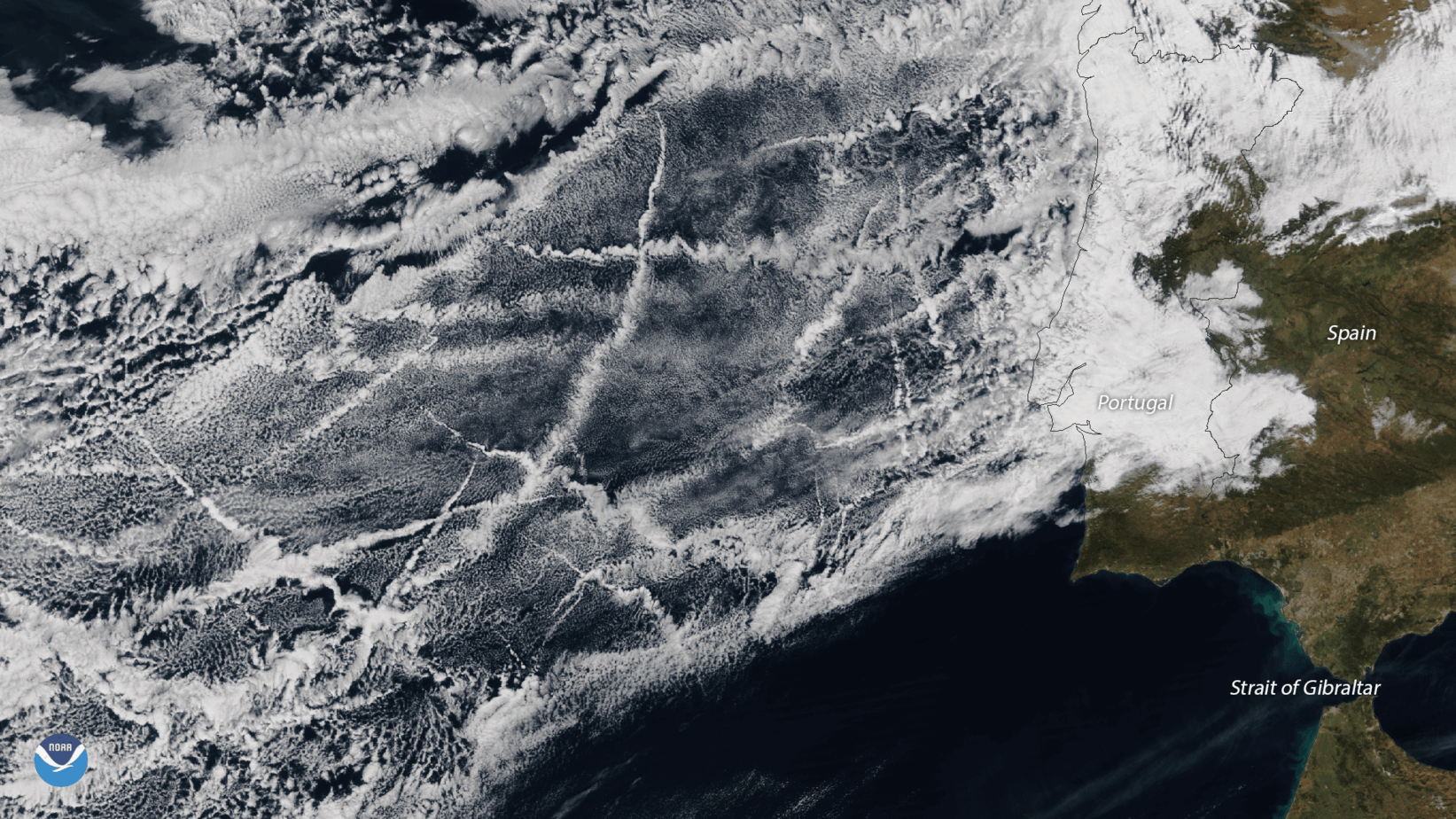Drifting beside western coasts
of uncovered continents,
metallic leviathans stretch
their sunken limbs.
Hinged jaws spitting
sulphurous seeds that
linger beneath the ether;
clouds condensing to
float through the air
with steady, rhythmic slur.
Hidden from view these
artificial barrels of rain
line up in formation;
secreted shiptracks
that sway the rising heat
with convoluted patterns
of tempestuous intent.
Shadows forming out of sight,
as overheard unblinking eyes
peel back this salted shroud:
a stark glimpse
behind unsettled scenes.

This poem is inspired by recent research, which has identified how satellites can be used to better monitor the emissions from ships and the effect that these emissions have on cloud formation and climate change.
The emissions from ships contain many different chemicals, including sulphate aerosols (small particles of oxygen and sulphur) which act as surfaces (or seeds) on which water droplets can start to accumulate, leading to linear cloud formations, known as shiptracks. How these aerosols affect cloud formation is important because clouds can influence climate change, cooling or warming the Earth’s atmosphere by either reflecting the heat from the sun, or trapping the heat that is emitted from the Earth’s surface. As such, these emissions and subsequent shiptracks need to be accounted for in the various models that aim to predict future climates.
In this study, researchers observed more than 17,000 shiptracks from satellite observations, and matched these to the movements of individual ships using their onboard GPS. By connecting individual shiptracks to these GPS measurements, the researchers have shown that almost half of all shiptracks are currently undetected, masking a significant contribution to the climate impact of shipping. This new research therefore demonstrates how satellites might be used to better monitor ship emissions, and in turn how this might be used to better enforce restrictions on the sulphur content of fuel.
An audio version of this poem can be heard here:
Discover more from The Poetry of Science
Subscribe to get the latest posts sent to your email.
this is a beautiful poem Sam,
have a nice weekend,
Rolf
Thank you Rolf! 😀